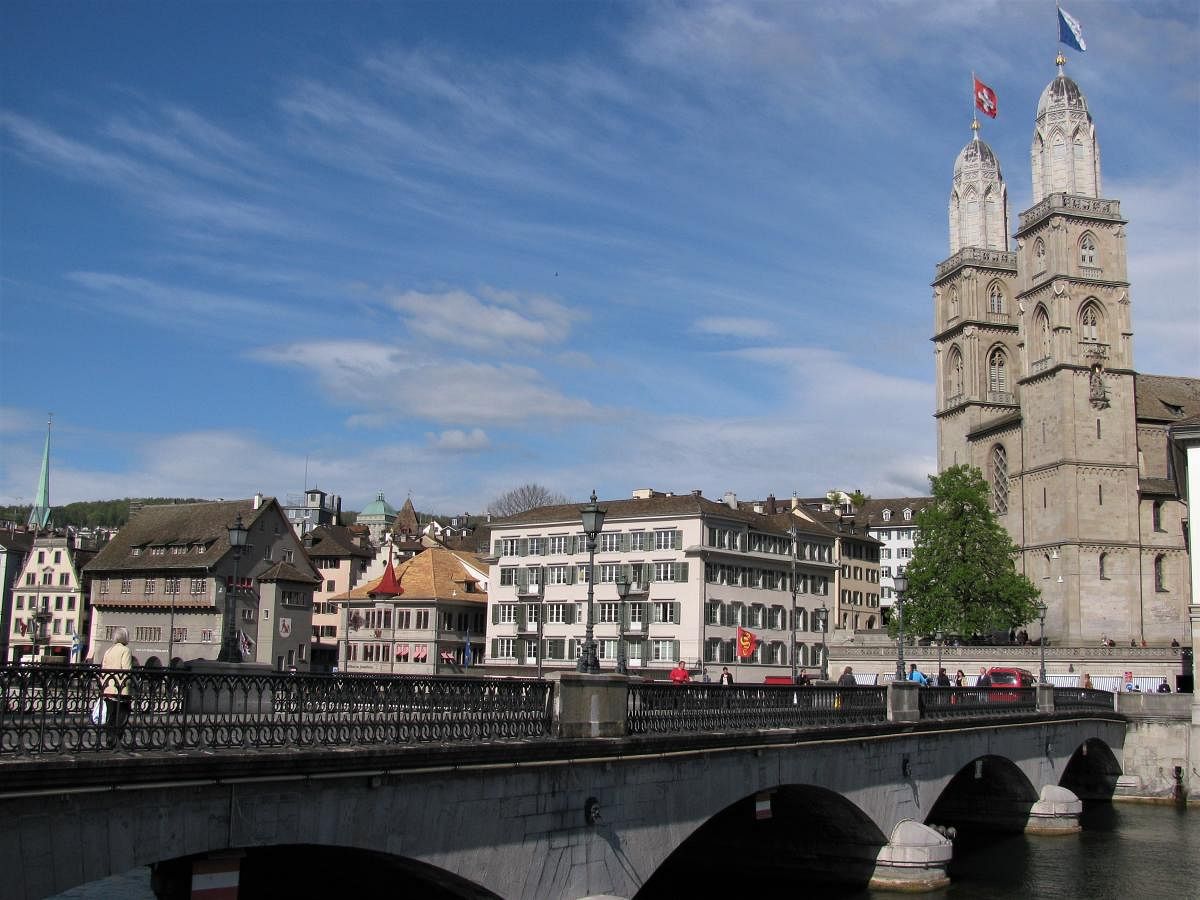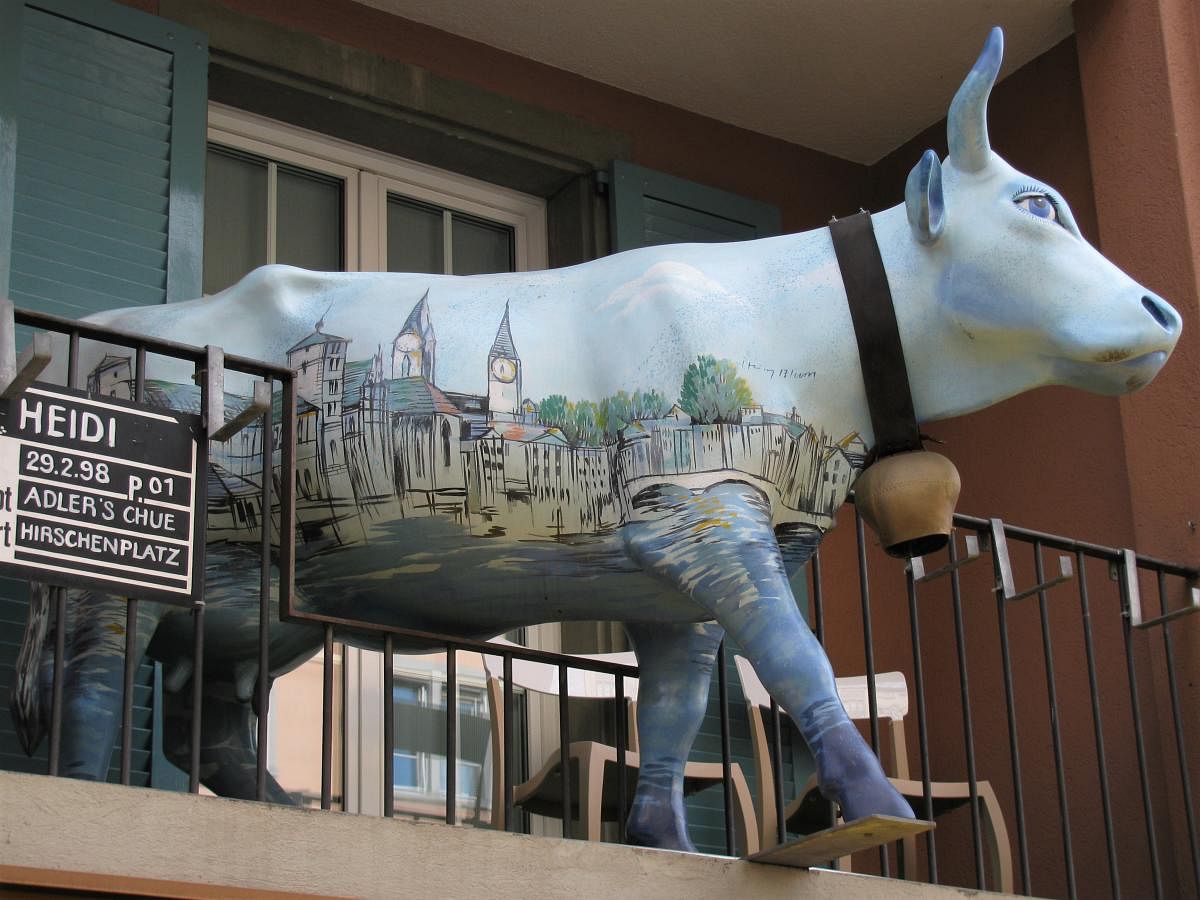

To explore and enjoy a new place, it’s best to walk it. I followed that advice in the compact city known for watches, chocolates, banking, and business — Zurich. My little self-guided tour began on a pre-pandemic August day, taking in many famous viewpoints, historic sites, trendy areas, and art galleries.
At Bahnhofbrucke, I watched blue-white trams trundle by. Beyond them, at Zurich Hauptbahnhof, one of the world’s largest, busiest railway termini, throngs of formally dressed passengers emerged — many wheeling suitcases with airline tags. “From the airport,” explained a helpful old lady seeing my puzzled expression. The rail gate links trains to the airport, all of Switzerland and parts of Europe. Among people coming out, some were carrying brown paper bags with fresh veggies, brochettes.
“Shoppers from the Farmer’s Market.” It was the lady again, waiting for a friend. The 1871-designed station is huge. A series of magnificent arched sun-lit steel-glass adorn the world-class terminus. A large floating sculpture, the Guardian Angel, greeted visitors. Interestingly, in this rush of people, a well-organised weekly Farmer’s Market was in progress. Agri-produce to bakery and household needs were changing hands in a long tradition where the rural folk link with urban consumers. Among the gastronomes, housewives checking the produce, I saw a Sikh in a t-shirt that said, ‘Keep Calm and Steam on’. In a small chat, he said the city had many desi eateries, and that excellent chana bhatura could be had in the mall below. Stepping out into the bright daylight of BahnhofPlatz, I came by an immense bronze statue of Alfred Escher. The politician, entrepreneur, and early proponent of the railroads is credited with scooping Zurich into modern times, from its medieval vestiges and holds. A sample of this achievement was right there, in front of me: Bahnhofstrasse. And Mr Eicher was keeping a steady watchful eye on it. The tree-lined promenade elegantly represents Alstadt’s diversities and progresses. In it are ancient architecture to innovative, futuristic designs — elegant homes, restaurants, luxury boutiques, department stores, timepiece and jewellery stores, Swiss banks, and famous international brands. Behind these establishments throbbing with vitality and economic activity are quaint winding streets, cobble-stoned alleys, and narrow walkways. Once the main thoroughfares in the Middle Ages, manufacturing and industrial hub in the 1800s, they are today an up-market district.
Switzerland may be small, but when it comes to clocks, it is big. The country of cuckoo clocks and ubiquitous watch brands is home to Europe’s largest church clock face. And there are four of them in Zurich’s oldest church, St Peter’s — each measuring 28.5 feet in circumference. There were other medieval soaring religious structures in this predominantly Protestant, German-speaking canton.
The Gothic Fraumunster (Church of our Lady), recognisable by its slender blue spire pointing skywards, has the famous stained glass windows by Marc Chagall. The third church I stopped by, on my return journey via the Quai Brucke, was the city’s landmark, the austere serene twin-towered 12th-century Grossmünster. Here, a lady guide was addressing a group of tourists, “Old Town is the cultural, social and historical melting pot with the highest concentration of pubs and clubs in Switzerland. It’s there in your 20 Minuten.”
The news site lists information on dining, entertainment and cultural activities. It said that James Joyce came here to write his masterpiece, Ulysses. Also guided by it, I went to the art museum, Kunsthaus to see Munch’s The Scream…and also caught displays of Swiss creative work, Monet, Picasso, Rothko, Warhol…
At the tree-shaded Burkliplatz, traffic was buzzing and on the other side, the lakeshore was alive with young people’s laughter. Across the junction was an Indian eatery. And there are many in the city — ranging from Mughlai to South Indian and even Sri Lankan. Before returning to the hotel, I stopped at the Tuscan Renaissance-style Zurich GPO, a two-storey campanile-like structure with two-clock faces. This once busy postal office retains its old charm even though the internet has disrupted and taken away its traditional business. It was here in 1997, that five men came in — not to buy stamps and post letters but with a different agenda. Brandishing guns and loud barks, they stormed in, looted some 53-million euros, and scooted out without a trace. The incident has gone down in Swiss criminal annals as the worst robbery in Zurich…partly because the robbery happened with toy-pistols! No wonder Mr Escher continues to keep a steady watchful eye on the Old Town!